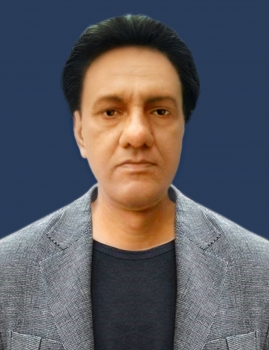
Ever since the Good and Services Tax (GST) has been rolled out, it has brought mixed feelings of hopefulness and trepidations for every individual who is a buyer or a seller. While it has been the reason for restless nights for some, others have got a sigh of relief. Irrespective of the category to which an entity belongs, the new indirect tax regime has impacted everyone in one way or the other.
GST is affecting numerous industries in different ways and art is no exception. Therefore, it becomes imperative for all the art enthusiasts and collectors to know the impact of this new indirect taxation policy on the world of art. Though, it has been nothing less than a celebration for a few sectors, it has not been that favorable for the Indian art industry. The policy, which was implemented at the stroke of midnight on July 1st, has changed everything.
Let’s have a look at some of the significant changes that GST has brought in the Indian art industry from the time it got implemented. By means of this blog, we dig deeper into the meaning of GST and its impact on Indian art.
What is GST?
GST is one of the biggest indirect tax reforms in the country since independence. GST is expected to bring together the various state economies while improving the overall economic growth of the nation.
It is a comprehensive indirect tax which is levied on manufacturing, selling and consumption of goods as well as services at the national level. It has omitted all indirect taxes being levied on goods and services by states and Central government.
Also Read: Want to Buy Indian Art?
There are around 160 countries in the world that have GST in place. GST is a destination based taxation system where the tax is collected by the State where goods are consumed. India implemented the GST from July 1, 2017 and adopted the dual GST model in which both States and Central levy tax on Goods or Services or both.
These taxes are further classified into three categories. They are-
- SGST – State GST, collected by the State Govt.
- CGST – Central GST, collected by the Central Govt.
- IGST – Integrated GST, collected by the Central Govt.
Taxes on art prior to GST-
Artworks such as ceramics, folk paintings and antiques were charged with VAT or exempted from taxes in many states like West Bengal. In Rajasthan, the VAT was very low. Original engravings, prints and lithographs too were taxed minimally.
Taxes on art post-GST-
Defined GST rates for Art industry comes under the GST Rate & HSN Code for Paintings, Decorative & Sculptures -Chapter 97.
The new tax regime has made it difficult for Indian artists to find buyers as it has made the artworks more expensive.
In this single taxation policy paintings, pastels and drawings, original engravings, prints and lithographs, statutory and original sculptures in any material and unique items exceeding 100 years fall under the 12% tax bracket.
Only postage or revenue stamps, stamp-postmarks, first-day covers, postal stationery (stamped paper), and the like, used or unused, and the Numismatic coins are taxed at 5%.
How is it impacting Art?
Art has always been a matter of choice and not a necessity. Due to this very reason only 2-5% of the total artworks displayed used to get sold and this has decreased even more after the implementation of the GST regime.
Also Read: Sanctum Sanctorum of Art for Sale Online
Possessing original pieces of art are considered as a luxurious possession and not an essential part of one’s décor. The overall tax that is levied on art pieces is 12%. Apart from adding up to the plight of already ailing art industry, government has no special incentives, initiatives or schemes to scale up the growth of this Industry.
Conversely, China gave 10 years tax exemption to all the artists.
Conclusion-
At international level, Indian artists missed many opportunities of showcasing their talent due to the implications of demonetization and GST.
This uniform taxation policy- GST has only added up to the agony of the already struggling Indian art industry. India is a land of various art styles and forms which are practiced by people all around the country. Artistic endowments know no religion and an artist who is working from a remote or rural area sells his artworks on meagre amounts and the new indirect tax regime has raised problems for artists like him. This is a huge threat to the livelihood of the small artisans and artists.





















